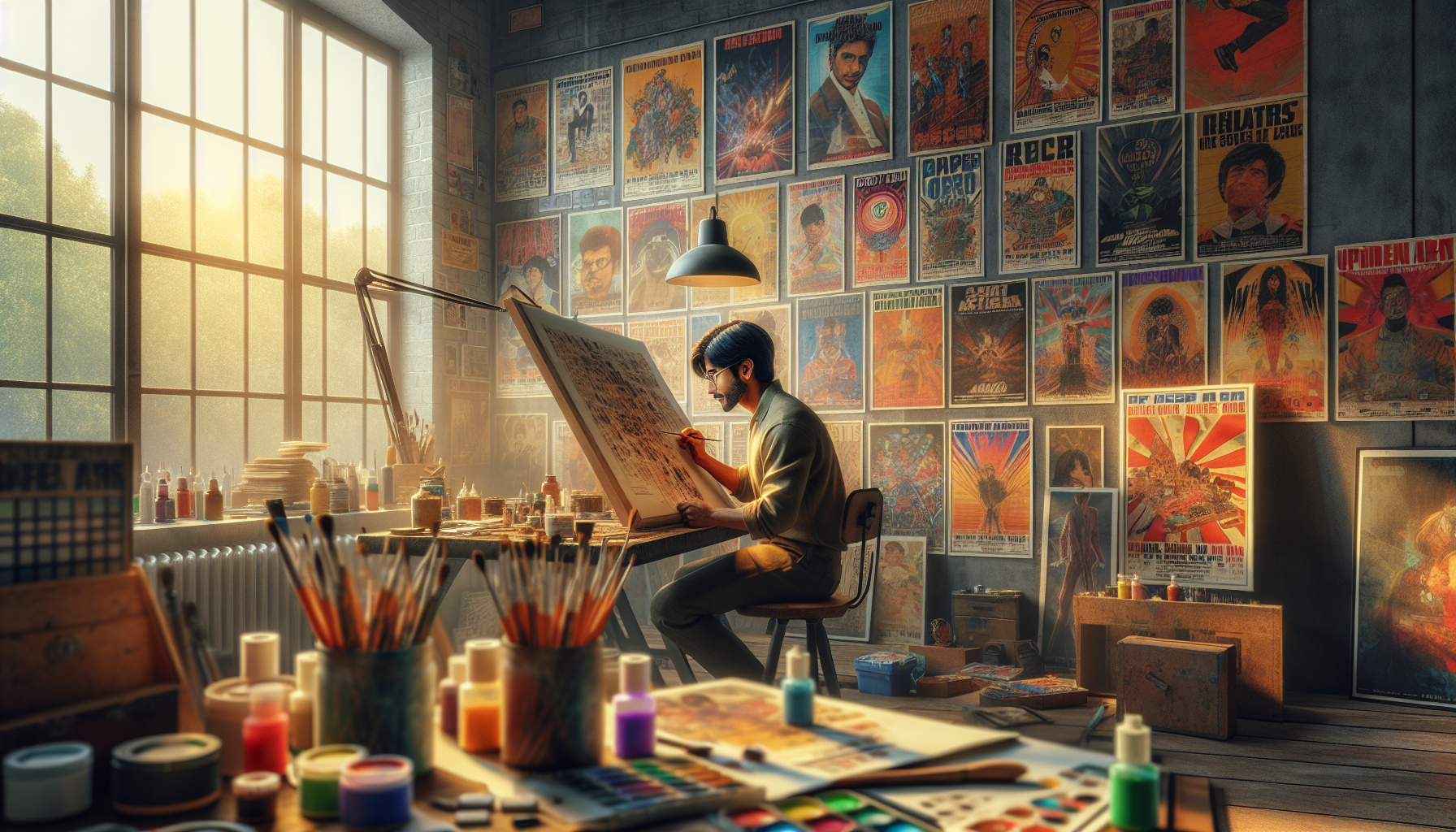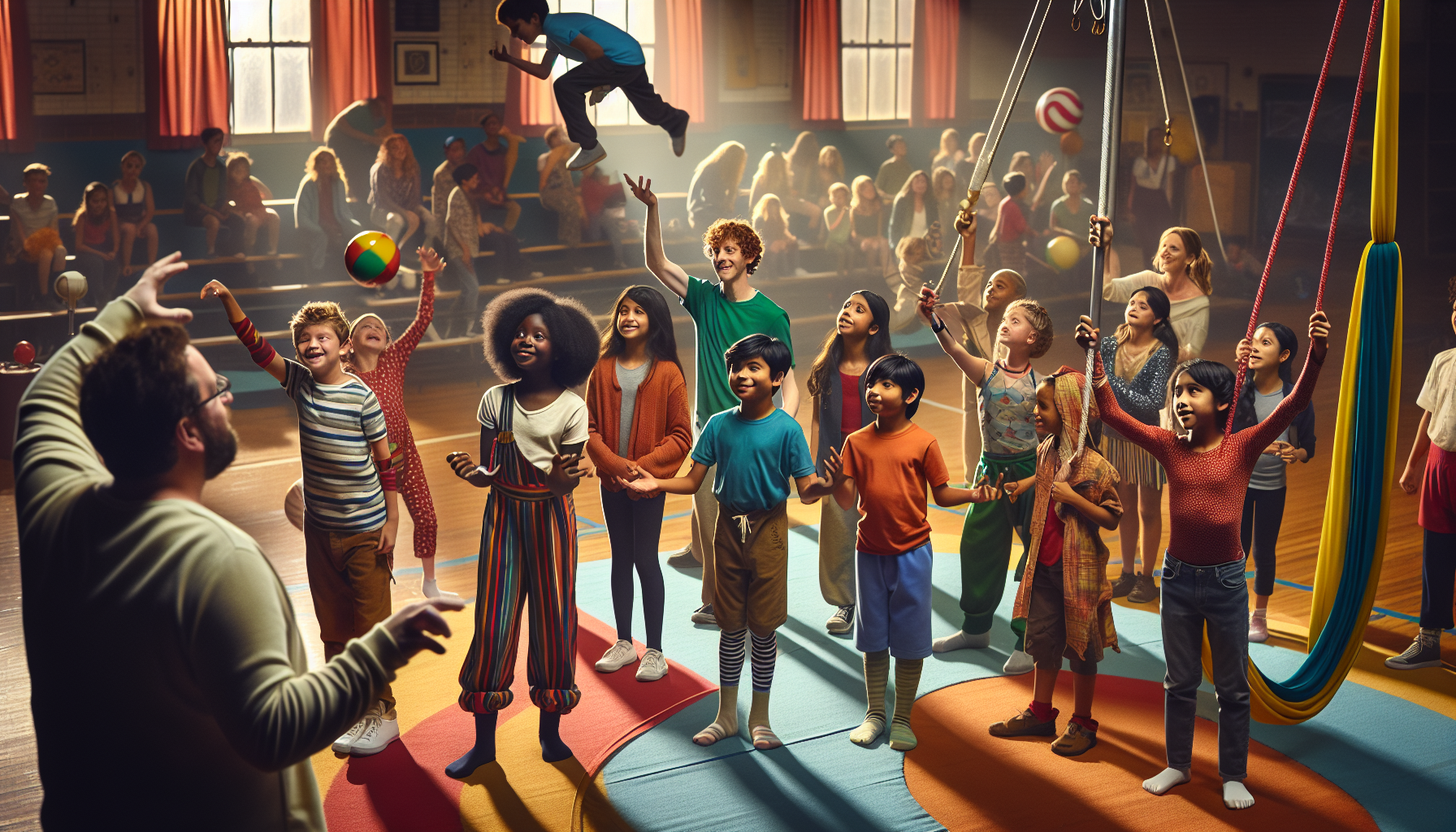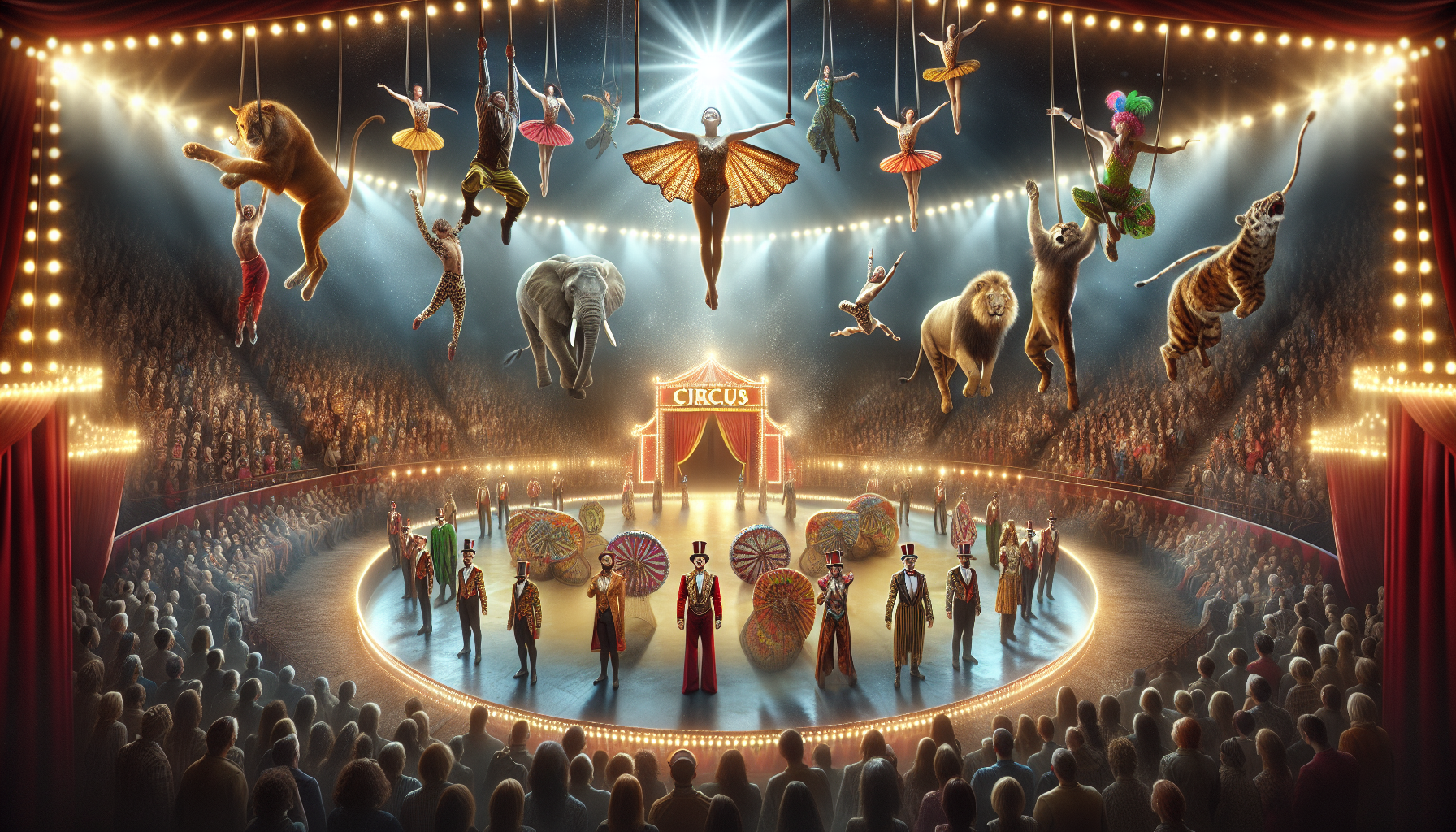In the vibrant world of visual storytelling, poster artists stand as the unsung heroes, blending creativity and communication to capture the essence of an era or emotion. Their unique signature styles not only define individual artistic identities but also influence broader design trends and cultural movements. This exploration delves into the captivating universe of poster artistry, shedding light on the distinctive techniques and elements that set these visual narratives apart.
Each poster artist brings to the table a personal lexicon of colors, shapes, and forms, transforming ordinary canvases into extraordinary works of art. From the bold, contrasting hues of pop art to the intricate, detailed lines of vintage-inspired designs, poster art reflects a diverse spectrum of styles. This narrative journey will uncover how these elements come together to create iconic visuals that resonate across generations and cultures.
Understanding the artistry behind posters offers more than just aesthetic appreciation; it provides insights into the cultural and historical contexts that influence these creations. Exploring the evolution of poster art from its historical roots to modern-day interpretations reveals a dynamic interplay of tradition and innovation. Each artist’s work serves as a window into the societal issues, technological advancements, and cultural shifts that shape our world.
Join this visual exploration as we dive into the world of poster artists, celebrating their contributions to the art community and beyond. Whether through the minimalist elegance of contemporary designs or the rich textures of retro aesthetics, these artists continue to push boundaries, leaving an indelible mark on the canvas of cultural expression. 🎨✨
Exploring the Evolution of Poster Art
Poster art has been a dynamic and evolving medium that reflects cultural, political, and social movements across different eras. From the propaganda posters of the World Wars to the psychedelic designs of the 1960s, poster art has continuously adapted to the changing tides of society. 🎨
The evolution of poster art can be traced back to the late 19th century, where it began as a tool for advertising and public announcements. Artists like Henri de Toulouse-Lautrec in France revolutionized the medium by infusing it with bold colors and expressive lines, setting the stage for what would become a powerful form of artistic expression.
As we moved into the 20th century, the role of posters expanded beyond mere advertisement. They became vehicles for political messages and social commentary. The Russian Constructivists used posters to promote socialist ideals with their geometric shapes and striking visuals. Similarly, during the American Civil Rights Movement, posters played a crucial role in mobilizing people, their striking simplicity making them accessible to a wide audience.
In the contemporary era, the advent of digital technology has further transformed poster art. Artists now have an array of tools at their disposal, allowing for more experimentation and creativity. The rise of digital platforms has also democratized poster art, providing artists from around the world with a stage to showcase their unique styles and messages.
Defining Characteristics of Signature Styles
A poster artist’s signature style is a unique blend of technique, color, form, and thematic elements that make their work instantly recognizable. These distinctive styles are the result of years of honing one’s craft and exploring personal and cultural influences.
One of the defining characteristics of a signature style is the use of color. Artists like Shepard Fairey are known for their limited color palettes, often employing bold reds, blacks, and whites to create striking imagery. This approach not only defines their visual language but also evokes specific emotions and responses from the viewer.
Another element that contributes to a unique style is the technique. Screen printing, for instance, offers a texture and depth that is distinct from digital prints. Artists like Chuck Sperry utilize this technique to create rich, layered posters that invite the viewer to explore their intricate details.
Thematic elements also play a critical role in shaping a signature style. Artists often draw inspiration from cultural, political, or personal themes that resonate with them. For example, Emek is known for his intricate designs that often incorporate elements of nature and surrealism, reflecting a deep connection to the environment and a commentary on the human condition.
Influence of Cultural and Historical Context
Cultural and historical contexts have a profound impact on the development of an artist’s signature style. The societal events and cultural movements of an artist’s time serve as a backdrop, influencing their themes, techniques, and overall approach to poster art.
For instance, the Art Nouveau movement of the late 19th and early 20th centuries, with its emphasis on organic forms and intricate details, deeply influenced poster artists like Alphonse Mucha. His work is characterized by flowing lines and floral motifs, reflecting the aesthetics of the time.
Similarly, the political climate of the 1960s and 70s, marked by anti-war protests and civil rights movements, shaped the work of artists like Milton Glaser and his iconic Bob Dylan poster. This era encouraged artists to use their craft as a form of protest and a means to communicate powerful messages of change and unity.
Contemporary poster artists continue to be influenced by the cultural and historical context of their time. The digital age, with its global connectivity and rapid dissemination of information, allows artists to draw inspiration from a multitude of sources, creating a melting pot of styles that reflect the diversity and complexity of today’s world.
Modern Poster Artists and Their Impact
The modern era has ushered in a new wave of poster artists who are making significant impacts with their innovative approaches and fresh perspectives. These artists blend traditional techniques with modern technologies, creating works that resonate with contemporary audiences.
One such artist is KAWS, who has successfully bridged the gap between fine art and commercial art. His use of bold, cartoon-like characters and vibrant colors has made his posters highly sought after, both in galleries and by collectors worldwide. His work often blurs the lines between different artistic disciplines, challenging the traditional notions of what poster art can be.
Another notable figure is Paula Scher, a graphic designer and poster artist whose work has left an indelible mark on the design world. Known for her expressive typography and dynamic compositions, Scher’s posters often convey complex ideas in visually engaging ways. Her contributions have not only influenced poster design but also the broader field of graphic design.
Technological Advances and Their Influence
Technological advances have played a crucial role in shaping the evolution of poster art, providing artists with new tools and techniques to express their creativity. The advent of digital design software, for instance, has revolutionized the way posters are created, allowing for more precision and experimentation in the design process.
With programs like Adobe Photoshop and Illustrator, artists can now manipulate images, colors, and typography with ease, creating complex compositions that were once difficult to achieve with traditional methods. This has opened up new possibilities for poster design, enabling artists to push the boundaries of their craft.
The rise of digital printing technology has also had a significant impact. Unlike traditional screen printing, digital printing offers a faster and more cost-effective way to produce posters, making it accessible to a wider range of artists. This has democratized the medium, allowing emerging artists to share their work with a global audience without the need for large production budgets.
Furthermore, the internet and social media platforms have transformed the way posters are distributed and consumed. Artists can now reach audiences across the globe with just a click, building communities around their work and engaging with fans in real-time. This connectivity has not only expanded the reach of poster art but has also fostered a sense of collaboration and exchange among artists worldwide.
Challenges and Opportunities in the World of Poster Art
The world of poster art, like any artistic field, presents both challenges and opportunities for artists. Navigating these dynamics requires a keen understanding of the market, the ability to adapt to changing trends, and the persistence to maintain one’s unique voice in a crowded space.
One of the primary challenges faced by poster artists today is the oversaturation of the market. With the advent of digital technology, anyone with a computer can create and distribute posters, leading to a vast array of work that can be overwhelming for consumers to navigate. Artists must find ways to stand out and connect with their audiences in meaningful ways.
However, this challenge also presents an opportunity. The democratization of poster art means that artists have access to a wealth of resources and platforms to showcase their work. Online marketplaces, social media, and crowdfunding platforms offer new avenues for artists to gain exposure and build their careers.
Another challenge is the ever-changing nature of design trends. Artists must stay informed and adaptable, balancing the need to stay relevant with the desire to maintain their unique style. This requires a willingness to experiment and evolve, embracing new techniques and ideas while staying true to one’s artistic vision.
Despite these challenges, the opportunities in the world of poster art are vast. The medium’s inherent flexibility and accessibility allow artists to explore a wide range of themes and styles, creating works that resonate with diverse audiences. As the world continues to change and evolve, so too will the art of the poster, offering endless possibilities for those who dare to push the boundaries of their creativity.

Conclusion
In conclusion, the artistry of poster creation is a vivid tapestry woven from the threads of cultural, historical, and technological influences. Throughout history, poster art has served as a powerful medium of expression, from the bold propaganda of past wars to the vibrant and eclectic designs that characterize today’s artistic landscape. As we navigate the complexities of the modern world, poster artists continue to push the boundaries of creativity, merging traditional techniques with cutting-edge digital tools to craft pieces that speak to both personal and collective narratives.
Moreover, the signature styles of poster artists are a testament to their individual journeys and unique perspectives. These styles, often defined by distinct use of color, technique, and thematic content, not only make their work instantly recognizable but also evoke a profound emotional response from audiences. By drawing on their cultural and historical contexts, artists infuse their creations with depth and meaning, making poster art a mirror reflecting the zeitgeist of their times.
Furthermore, the advent of digital technology has democratized poster art, allowing artists worldwide to share their visions with global audiences. This connectivity has fostered an unprecedented exchange of ideas and styles, enriching the medium with diverse influences. Despite the challenges posed by an oversaturated market and rapidly changing trends, the opportunities for innovation and engagement in poster art are boundless. As artists continue to explore and redefine this dynamic medium, poster art will remain a vibrant and influential form of artistic expression. 🌟
Toni Santos is a visual storyteller and archival artisan whose creative journey is steeped in the bold colors, dramatic typography, and mythic imagery of old circus posters. Through his artistic lens, Toni breathes new life into these once-lurid canvases of wonder, transforming them into tributes to a golden era of spectacle, showmanship, and cultural fantasy.
Fascinated by the visual language of vintage circuses — from roaring lions to gravity-defying acrobats, from hand-painted banners to gothic typefaces — Toni explores how these posters once captured the imagination of entire towns with nothing more than ink, illusion, and a promise of awe. Each composition he creates or studies is a dialogue with history, nostalgia, and the raw aesthetics of entertainment on the move.
With a background in handcrafted design and visual heritage, Toni blends artistic sensitivity with historical insight. His work traces the forgotten typographies, chromatic choices, and symbolic flair that defined circus marketing in the 19th and early 20th centuries — a time when posters were not just advertisements, but portable portals to dreamworlds.
As the creative force behind Vizovex, Toni curates collections, illustrations, and thoughtful narratives that reconnect modern audiences with the magic of old circus art — not just as ephemera, but as cultural memory etched in paper and pigment.
His work is a tribute to:
The flamboyant storytelling of early circus posters
The lost art of hand-lettered show promotion
The timeless charm of visual fantasy in public space
Whether you’re a vintage print enthusiast, a circus history lover, or a designer inspired by antique aesthetics, Toni invites you into a world where tigers leap through fire, strongmen pose in perfect symmetry, and every corner of the poster whispers: Step right up.





